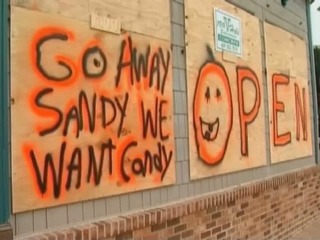

As a native New Yorker, I would say at least 90% of the people I know, and my entire family, live in New York, or somewhere on the east coast. I was there for 9/11, Hurricane Irene, and all the other blizzards, hurricanes and natural disasters that occurred in the city over 25 years.
Now that I’m no longer there, I have had to turn to social media to find out what’s really been going on. In some ways the news of what Hurricane Sandy has been doing to New York City is extremely distressing and unnerving for me. In another way, social media has actually been somewhat comforting. Maybe there is nothing I can do to help, but at least I can see that my friends, and members of my family are safe.
Facebook, Twitter and Instagram all were useful tools for keeping up with what has been going on and keeping in touch with people, and they helped to tell the story.
Simply by looking at the trending topics both during the height of the storm, and in the aftermath once the storm died down, most messages were personal, with people relaying messages to their loved ones to “stay safe/be safe,” or telling them that they were in their prayers.
The top 10 terms during the storm:
1. Sandy / hurricane / Hurricane Sandy
2. stay safe / be safe
3. storm
4. weather
5. east coast
6. power
7. my friends
8. cold
9. prayers / praying
10. wind / winds
Once the storm was over, and the cleanup began, the top 10 trending terms became more about people who survived the storm relaying that they are safe back to their friends and family, with terms like “we are ok,” and “made it.”
The top 10 terms after the storm:
1. we are ok
2. power – lost power, have power, no power
3. damage
4. hope everyone is ok
5. trees
6. made it
7. safe
8. thankful
9. fine
10. affected
During the storm, Facebook was used as a place for people to come and relay messages to each other regarding their safety,rather than becoming the place to spread news.
Twitter, on the other hand, became a place for spreading photos and videos of what was going on in New York. According to analytics firm Topsy, over 3.2 million Tweets with the hashtag #sandy were sent in the past 24 hours, with 118 million sent in just the last hour.
For example, there was this tweet from Daily Mail editor-at-large Dan Wootton:


And while Twitter put up a blog post with hashtags for people in different states to follow for emergency message, Twitter is never a place where things too seriously, so, of course, Hurricane Sandy got its own Twitter account, sending out tweets like this one:


Twitter served as a place to get more real time information regarding both what was happening, and what to do in case of an emergency, rather than the more personal messages left on Facebook.
The real story of how social media reacted to Hurricane Sandy was on Instagram where people posted 10 pictures of the hurricane every second.
The hurricant photos have been aggregated onto a website called Instacane.com, which describs itself as, “the story of hurricane sandy told through instagram.”
The site was created during Hurricane Irene in 2011, and it pulls a feed of photos from Instagram of Hurricane Sandy and shows them in real time. The photos must be made public and posted to Twitter with the hashtag #Sandy to be pulled.
Sharing experiences through photos is a new phenomenon, and it makes you wonder if Instagram could pose a serious challenge to other social networks in the future.
Of course, whenever a new source of information comes along there will always be people out trying to use it to exploit people’s fears. This time it was with a bunch of fake pictures that were said to be of Hurricane Sandy, but which were actually photoshopped, from entirely different storms or even from movies.
(Image source: http://movieline.com)



















